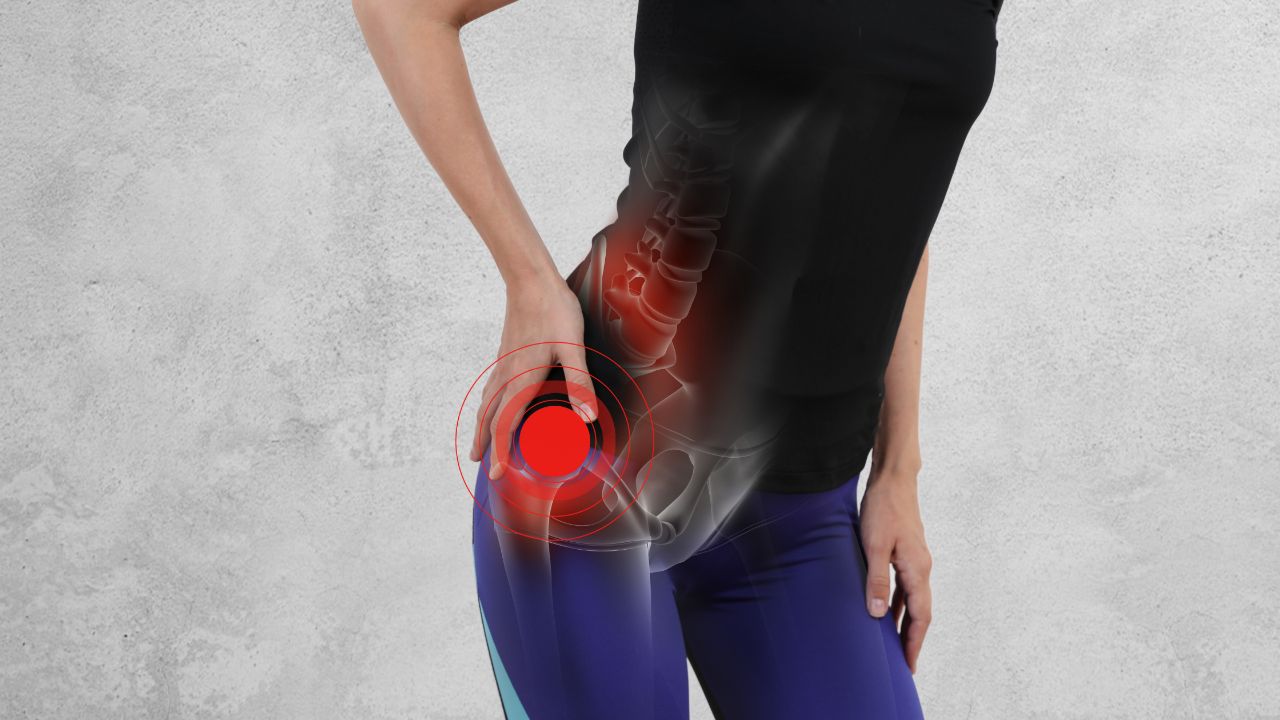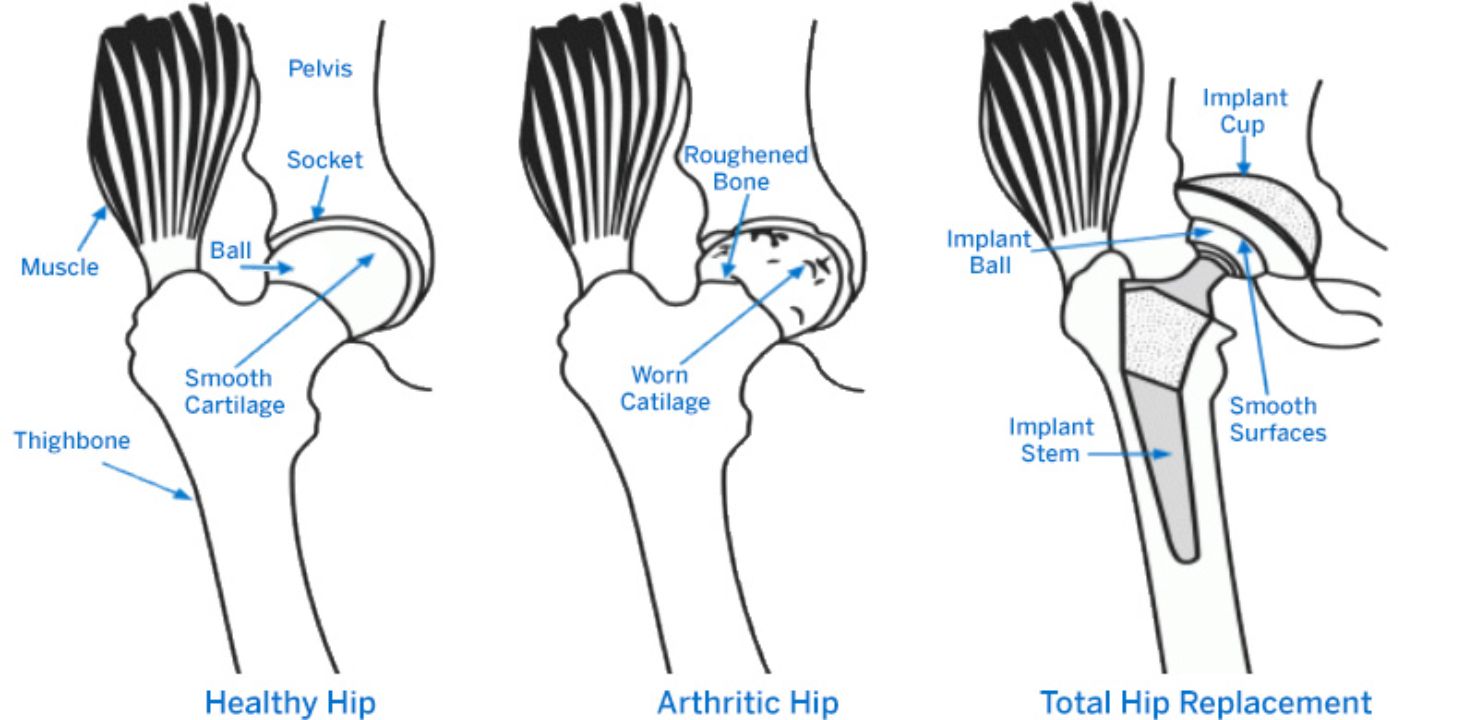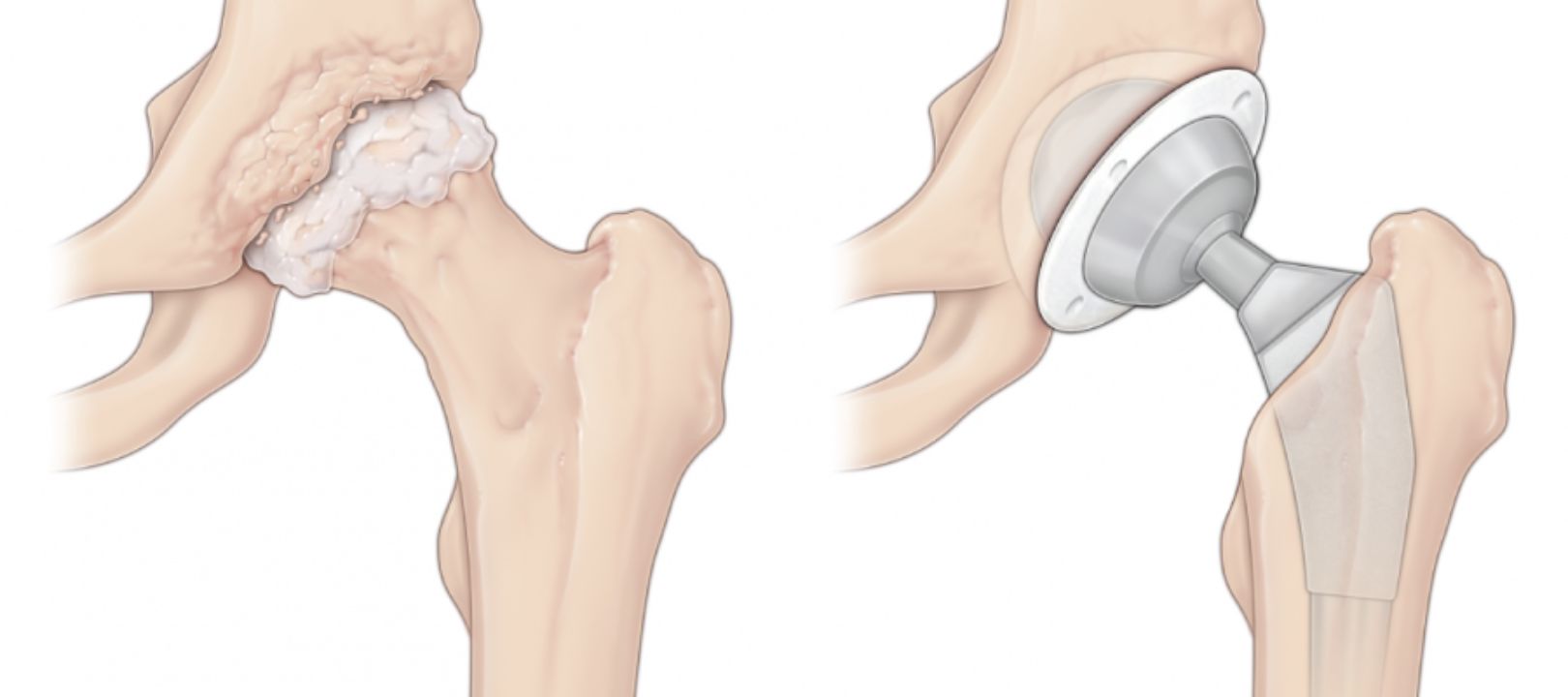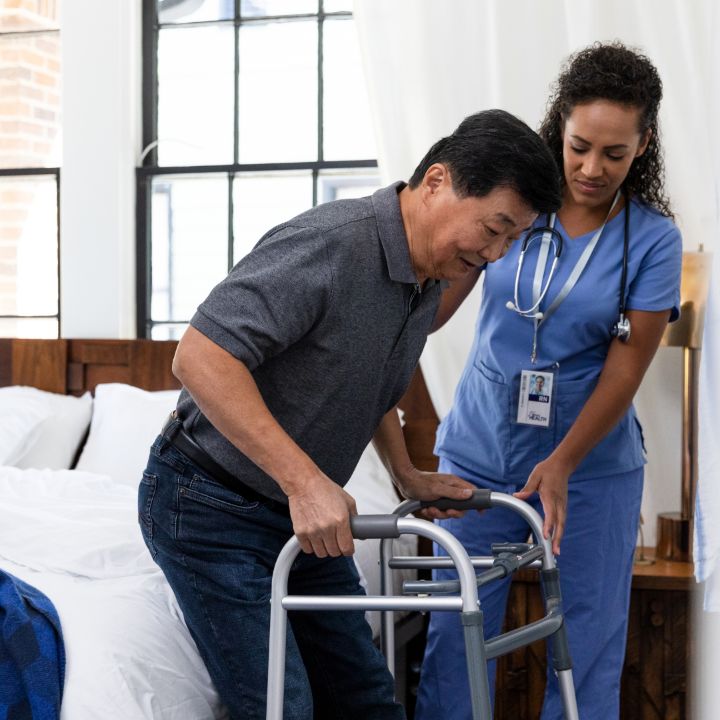Hip replacement surgery involves replacing the damaged hip joint with an artificial one, relieving pain and restoring function.
Hip pain can be caused by various factors, such as arthritis, injury, or wear and tear over time. Symptoms of hip degeneration may include pain, stiffness, and difficulty walking or performing daily activities. Before considering surgery, non-surgical treatment options like physical therapy and medication should be explored.
Choosing the right surgeon is crucial for a successful outcome, so research their experience and expertise. The hip replacement procedure involves removing and replacing the damaged joint with a prosthetic one. Recovery and rehabilitation are essential for restoring strength and motion, and managing pain during this time is important.
Long-term care and maintenance of your new hip will help ensure its longevity. By learning more about hip replacement, you can make an informed decision about your health and well-being.
If you’re experiencing hip pain, it’s usually due to common reasons such as arthritis, bursitis, or muscle strains. These causes can be managed through exercises, physical therapy, medication, and lifestyle adjustments.
Arthritis, inflammation of the joints, can lead to hip pain. Regular exercise like low-impact swimming or cycling can help improve joint flexibility and reduce pain.
Physical therapy may also be recommended to strengthen the muscles around the hip joint and improve overall mobility.
Medication, such as nonsteroidal anti-inflammatory drugs (NSAIDs), can temporarily relieve pain and inflammation.
Additionally, lifestyle adjustments like maintaining a healthy weight and avoiding activities that strain the hip excessively can help alleviate hip pain.
When the pain deepens and movement becomes limited, your body whispers something wrong with your trusted joint. Hip degeneration can cause various signs and symptoms that may indicate the need for early intervention.
Here are some key signs to watch for:
 Photo Credit: New York Sports Medicine Institute
Photo Credit: New York Sports Medicine Institute
Early intervention is crucial in managing hip degeneration. Lifestyle modifications, such as maintaining a healthy weight and avoiding high-impact activities, can help alleviate symptoms. Natural remedies, such as ice or heat, may also relieve pain. Physical therapy can improve hip strength and flexibility, while alternative treatment options like acupuncture or chiropractic care may be considered.
Consulting with a healthcare professional can help determine the best course of action for your hip pain.
Seeking non-surgical treatments for your hip pain can open up a world of possibilities for finding relief and restoring your mobility. There are several options available to help alleviate hip pain without undergoing surgery.
Alternative therapies such as acupuncture and chiropractic care can provide some relief by targeting specific pressure points and realigning the body.
In addition, implementing an exercise regimen tailored to your specific needs can help strengthen the muscles surrounding the hip joint and improve flexibility.
Medication options, such as non-steroidal anti-inflammatory drugs (NSAIDs), can also help reduce pain and inflammation.
Physical therapy is another valuable tool that can help improve hip function through targeted exercises and stretches.
Lastly, making lifestyle changes, such as maintaining a healthy weight and avoiding activities that exacerbate hip pain, can help manage symptoms and prevent further degeneration.
One effective solution for restoring mobility and relieving discomfort is by opting for different types of surgical interventions that involve replacing the damaged hip joint with a prosthetic implant.
There are several types of hip replacements available, each with its own advantages and considerations. The most common types include total hip replacement, where both the ball and socket of the hip joint are replaced, and partial hip replacement, where only the ball is replaced.
 Photo Credit: HSS
Photo Credit: HSS
Other options include hip resurfacing, which involves capping the damaged ball with a metal implant, and minimally invasive hip replacement, which uses smaller incisions for a quicker recovery.
Different surgical techniques and implant materials are used to ensure the best possible outcome for each patient. Your orthopedic surgeon will help determine the most suitable option based on your specific needs and condition.
Finding the perfect surgeon for your hip procedure is like discovering a skilled artist who can beautifully sculpt the path to your restored mobility. When choosing the right surgeon, there are several factors to consider. Here are some tips to help you make an informed decision:
By carefully selecting the right surgeon, you can increase the chances of a successful and smooth hip replacement journey.
Preparing for hip surgery involves gathering information about the procedure, consulting with your surgeon, and developing a comprehensive plan for optimal recovery. Before the surgery, your surgeon may recommend pre-surgery exercises to strengthen the muscles around your hip joint, which can help improve your overall outcome. These exercises may include simple movements like leg lifts and gentle stretches.
 Photo Credit: Temple Health
Photo Credit: Temple Health
After the surgery, following post-operative precautions is important to ensure proper healing. Your surgeon will provide guidelines on weight-bearing restrictions, wound care, and medication management. Home modifications may be necessary to create a safe and comfortable environment for your recovery.
Physical therapy will be crucial in regaining strength, flexibility, and mobility. Your therapist will guide you through exercises and techniques to help you regain your independence. Pain management techniques, such as medication, ice packs, and relaxation techniques, will also be discussed to ensure your comfort throughout recovery.
To undergo the procedure, you’ll be placed under anesthesia. The skilled surgeon will skillfully remove the damaged joint and replace it with an artificial one. This will restore your ability to move with ease and without pain.
After the surgery, the rehabilitation process will be essential for a successful recovery. Physical therapy will help strengthen the muscles surrounding the hip and improve mobility.
The success rates of hip replacement surgery are high. Most patients experience significant pain relief and improved quality of life. However, it’s important to be aware of potential risks, such as infection, blood clots, or dislocation of the new joint.
Alternative treatments, such as medication or physical therapy alone, may provide temporary relief but aren’t a permanent solution.
When considering the cost of hip replacement, it’s important to consider factors such as hospital fees, surgeon fees, and post-operative care. It’s advisable to consult with your healthcare provider and insurance company to understand the financial implications.
Physical therapy will play a crucial role during your recovery and rehabilitation after the procedure. It will strengthen your muscles and improve your mobility. Rehabilitation exercises will be tailored to your specific needs. They will focus on regaining strength and flexibility in your hip joint. Physical therapists will guide you through a series of exercises. These exercises will gradually increase in intensity as you progress in your recovery.
 Photo Credit: Orthopedics Associates
Photo Credit: Orthopedics Associates
Post-operative care will also involve learning how to use mobility aids such as crutches or walkers. These aids will assist you in getting around safely. Additionally, pain management techniques will be incorporated into your rehabilitation plan. This will ensure your comfort during the healing process.
With the help of physical therapy and proper post-operative care, you can expect to regain your mobility. You can lead a more active lifestyle after hip replacement surgery.
Experiencing discomfort and pain during recovery can be challenging, but various techniques and strategies are available to manage and alleviate it. One effective approach is to incorporate managing exercises into your post-operative care routine. These exercises, prescribed by your physical therapist, can help strengthen the muscles around your hip joint, improve flexibility, and reduce pain.
Pain management techniques such as ice packs or heat therapy can also relieve pain. It’s important to follow your healthcare provider’s guidance on medication for pain relief, as they may prescribe non-steroidal anti-inflammatory drugs (NSAIDs) or other pain relievers.
Assistive devices, such as crutches or a walker, can also be used during recovery to support mobility and reduce discomfort. Remember to consult with your healthcare team to determine the most suitable pain management strategies for your individual recovery process.
Maintaining your hip implant for the long term is essential for ensuring its longevity and your continued enjoyment of an active lifestyle.
Long-term care and maintenance of your hip replacement involves a combination of exercises and precautions. Regular physical activity, such as walking, swimming, and low-impact exercises, can help strengthen the muscles around the hip joint, improving its stability and reducing the risk of complications. It’s important to follow the exercise program recommended by your healthcare provider or physical therapist.
 Photo Credit: Home Advantage Rehab
Photo Credit: Home Advantage Rehab
Additionally, taking precautions to protect your hip replacement is crucial. Avoiding high-impact activities like running or jumping can help prevent excessive stress on the implant. Be mindful of your body mechanics and avoid excessive bending, twisting, or squatting.
By following these guidelines, you can help ensure the long-term success of your hip replacement and maintain an active and fulfilling lifestyle.
A hip replacement is a surgical procedure where a damaged or worn-out hip joint is replaced with an artificial one, often made of metal and plastic components. It’s typically performed to relieve pain and improve mobility in individuals with severe hip arthritis or injury.
The longevity of a hip replacement can vary, but modern artificial hip joints typically last 15 to 20 years. Factors such as the patient’s age, activity level, and overall health can influence the lifespan of the replacement.
Recovery time after a hip replacement varies, but most people can start walking with assistance within a day or two of surgery. Full recovery, including a return to normal activities, typically takes 3 to 6 months.
Risks of hip replacement surgery can include infection, blood clots, hip dislocation, fractures, changes in leg length, and wear or loosening of the artificial joint. However, surgical techniques and postoperative care advancements have significantly reduced these risks.
Patients are typically encouraged to walk with assistance as soon as possible after surgery, often within a day or two. This early movement can help speed recovery and reduce the risk of complications.
While there is typically some pain after surgery, it is usually manageable with medications. Pain decreases over time and is often significantly less than the preoperative pain experienced due to arthritis or injury.